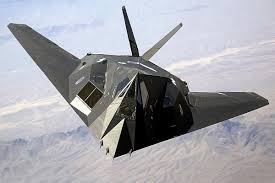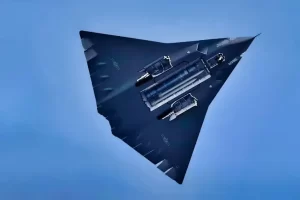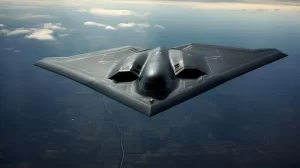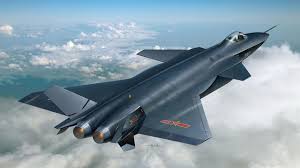J-36: A Story of Gains and Losses for China’s Revolutionary Fighter Jet The year 2024 was supposed to be an inflection point in the modernization of China’s military. A country celebrated a red-letter day last December 26, marking the 131st birth anniversary of Mao Zedong, the father of the People’s Republic of China. The day had two videos going viral on social media as the most futuristic fighter jets, purportedly part of China’s new sixth-generation aircraft, the J-36. Shocks reverberated through global military circles, along with debates on the potential of the said aircraft and the balance of gains and losses. Gains: Revolution in Air Combat Unmatched Stealth Capability
The most striking feature of the J-36 is that it’s tailless. Without the rear stabilizers, the aircraft can keep its RCS minimum, making it invisible to hostile enemy detection systems. Its stealth feature can ensure entry into hostile airspace undetected, giving the People’s Republic an overwhelming advantage in modern warfare.

Supersonic Speeds
Capable of flying over Mach 4, the J-36 is faster than most modern fighter jets. The speed at which this aircraft can conduct a strike, and be off before retaliation makes it highly effective against offensive and defensive operations.
Full Heavy Payload Capability
Analysts say the J-36 is estimated to carry above 45,000 kilograms of payload. This carries very advanced weaponry, including the PL-17 missile with a 400-kilometer range. Carrying this huge payload enables the jet to neutralize all threats both in the air and on the ground, thereby firmly placing this as a jet meant for strategic purposes.

Operating Versatility
But the J-36 is different in many ways from traditionally molded fighter jets; rather, this would be for multiple tasks like accompanying bombers, protecting the airspace of regions without land-based air defenses, and making long-range strikes on targets. That will go hand in hand with almost flawless integrations into drones, and fighter jets such as J-20 and J-35A.
The J-36 is fitted with advanced radar that can detect stealth aircraft farther than ever before. It is an immediate and formidable adversary against the likes of the most advanced fighter jets in the world, such as the U.S. F-35 and B-21 Raider, in solidifying China’s supremacy in the air.
 The Losses: Challenges and Limitations
The Losses: Challenges and Limitations
While the tailless design significantly adds to its stealth, it takes some of its agility away. Without rear stabilizers, the J-36 is much less capable of pulling off complex in-flight acrobatics, and, subsequently, much less effective in traditional close combat dogfighting. This, under normal concepts of air-to-air combat, is a serious weakness.
Designing a sixth-generation jet is a financial gamble, as research, testing, and production require immense resource investment. Again, high operation and maintenance costs may restrict deployment to a few numbers, thus undermining its potential battle performance.
Advanced systems and materials from which the J-36 is manufactured make maintenance hard. Most likely, keeping the aircraft operational will require unique equipment and knowledge, straining resources, and perhaps its availability during very critical missions.
 The J-36 has a double-edged nature, wherein the same drone and other aircraft networking ability enhances coordination on the battlefield, yet creates dependence upon faultless communications systems. If it fails because of cyberattacks or technical failure, it greatly weakens its potential.
The J-36 has a double-edged nature, wherein the same drone and other aircraft networking ability enhances coordination on the battlefield, yet creates dependence upon faultless communications systems. If it fails because of cyberattacks or technical failure, it greatly weakens its potential.
The J-36 has not escaped the notice of world powers. Since its reveal, the attention it has received from adversaries like the United States and India could escalate into an arms race in the region. This heightens the tensions and could result in some diplomatic repercussions, even militarization, as a consequence.
A Balanced View: Gains vs. Losses
The J-36 represents a very bold step toward realizing the country’s military ambitions. The stealth, coupled with speed and advanced weaponry, simply redefines the dimension of air combat. Integration of the most advanced technologies with long-range, strategic missions places the warfighter into the dimensions of modern combat.
 But one cannot overlook the aircraft’s shortcomings: lesser agility, high costs, and maintenance problems are part of the trade-offs in its design. High reliance on advanced systems and geopolitical repercussions, too, raise the ante for such a bold venture.
But one cannot overlook the aircraft’s shortcomings: lesser agility, high costs, and maintenance problems are part of the trade-offs in its design. High reliance on advanced systems and geopolitical repercussions, too, raise the ante for such a bold venture.
A Calculated Risk
The J-36 is much more than a fighter aircraft; it is the stamp of China’s technological prowess, the will to dominate the skies. And for that reason, its achievements-stealth, speed, and versatility-are an asset in modern warfare. Yet at the very same time, its losses do remind one that even the most advanced technologies come with certain inevitable trade-offs.
The world will certainly be watching as the J-36 is fitted into China’s arsenal. Will this aircraft balance its shortcomings with positive features? Only time and the dynamics of evolving warfare will tell. For now, it is a reminder of that delicate balance needed between innovation and practicality to reach military supremacy.

























